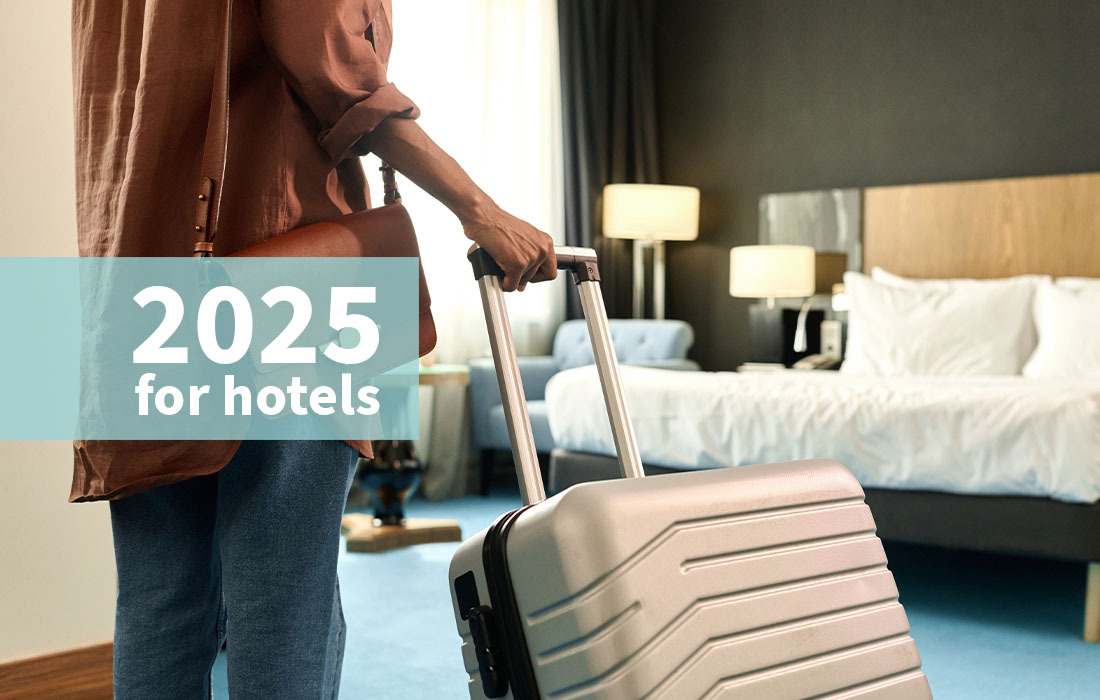Is mobile ordering the way forward for restaurants?
More and more hospitality operators are turning to mobile ordering and point-of-sale systems, according to a recent survey. But, aside from techical issues, mobile ordering might not be viable for all segments of the market. Daniel Thomas reports.
While it would be a stretch to suggest the days of waiting staff taking orders with a pen and pad are over, increasing numbers of hospitality operators are turning to mobile ordering and point-of-sale (POS) systems.
In a recent survey of nearly 500 global hospitality operators by telecoms giant Motorola, 82% reported an increasing importance of mobility within their organisation to help drive revenue and improve the customer experience.
When asked about the benefits of implementing a mobile strategy, nearly 50% of the survey respondents reported a boost in customer satisfaction, 27% cited an increase in per-guest average spend and 25% identified a rise in inventory accuracy.
The research also suggested that the mobilisation of key applications enables organisations to save or recover a daily average of 44 minutes per employee, due to increased efficiency.
Over the next five years, 53% of the respondents believe wireless ordering and reservation technologies will provide the greatest impact on the hospitality industry.
"Hospitality IT decision makers have made it clear that mobility is no longer an option but a necessity to survive in an increasingly competitive market," says Frank Riso, senior director of retail at Motorola Enterprise Mobility Solutions."
Mobility is by no means a new phenomenon for the sector - early adopters such as Wagamama were rolling out mobile POS systems in the early 2000s - but the increasing prevalence of wireless local area networks and the introduction of more cost-effective systems means that it has been opened up to a wider audience.
The growth of web-based POS systems, in particular, has offered more flexibility for smaller operators because they can run on any computer with an internet connection and browser, which means most smart phones and Personal Digital Assistants as well as mobile terminals. The web-based software does not require any software installations or updates and runs on secure servers in multiple data centres which have real-time backups.
Trevor Nesbeth, chief executive at mobile technology firm MGI Multimedia, says wireless ordering brings a number of benefits, allowing waiting staff to register orders and send them directly to the kitchen in real time, while customers are able to view their transaction and pay for it at the table.
"Waiters can fully concentrate on the order taking function and move from table-to-table, replacing the previous practice of table-to-kitchen-to-table," he says. "The waiter actually earns more revenue for the restaurant by attending and taking orders from customers instead of walking to the kitchen and back to the tables."
A wireless system can also accommodate immediate order alteration, says Nesbeth. "Changes to the customer's order can be made at the table and these changes sent in the blink of an eye to the kitchen," he says. "The waiter no longer needs to walk to the kitchen, search for the paper clip or order stub and then inform the head chef. The system does this function automatically."
Giving staff access to more information about meals from a server database enables them to provide instant answers to important questions about food content. It also allows them to retrieve information about the status of certain dishes - for example, those that are off the menu.
There are also benefits for managing staff themselves, according to Nesbeth. "The system can calculate revenue earned per waiter, time taken between orders per waiter, a daily count of tables served per waiter and much more," he says. "These performance indicators can be used to devise suitable remuneration packages or reward waiters for their productivity."
Of course, as with any technology implementation, there are a number of challenges in rolling out mobile ordering devices - one of which is to get the user interface on the handheld the same as it is on a touch-screen. Unless restaurants convert their whole operation to handheld units, the two screens must be the same.
In addition, some restaurants lack a hospitable environment for wireless applications. Equipment such as microwaves and air conditioning units can interfere with wireless signals, and cause the devices to malfunction.
As well as the technical issues, mobile ordering might not be viable for all segments of the market. Mitchells & Butlers, which operates brands in different parts of the casual dining sector, remains undecided on the technology, according to chief information officer Mike Sackman.
"There are discussions going on around whether capturing orders with a handheld device would be appropriate and if it wouldn't place a barrier between customers and staff," he says. "In some of our businesses it might, as customers may be looking for more interaction, but in others it may just help us get food more quickly to the table."
mobile systems in hospitality
Benefits
Increased employee productivity/efficiency
â- Improved customer service
â- Increased sales
â- Reduced staff costs via automated processes
â- Increased order fulfilment accuracy Challenges
â- Cost of hardware
â- Security concerns/risk
â- Cost of software, integration, service and support
â- Difficulties in employee training and support
â- Difficulties integrating mobile apps into existing infrastructure
Source: Motorola survey of 485 hospitality operators
case study: colchester united FC
Prior to the start of this season, Colchester United Football Club rolled out mobile point-of-sale systems from Agilysys as part of a wider implementation of the supplier's POS technology.
The football club, which opened the new build Weston Homes Community Stadium in 2008 after moving from Layer Road, contracted Lindley Catering to provide catering in three areas: the public concourses, where match-day food and beverages are served; food and beverage kiosks around the ground; and the new conference and banqueting suite, which consists of restaurants, executive boxes and suites offering corporate hospitality for up to 600 guests.
A total of 50 terminals have been installed across the club, of which 40 are in the public areas and 10 in hospitality. The system integrates with the club's third-party systems such as customer relationship management, finance, stock control, ticketing and event management.
The mobile system - mPOS - can serve customers anywhere, whether it is in hospitality suites or within concourse areas. It offers a customisable screen layout, barcode scanning, signature capture and online or offline ordering capabilities.
The use of the mobile devices will enable the club to improve service quality and enable more customers to be served, according to Adrian Chapman, IT manager at Colchester United FC. The club is also confident that the new system will enable it to achieve cost savings through better management of stock and by reductions in wastage and shrinkage, he adds.
"We have a suite of 200 reports, which we can tailor to our needs and access via the internet at any time and from anywhere," Chapman explains. "These reports give us real-time control of critical areas such as stock control, operations, management and finance. This means we can keep our finger on the pulse of the business and pre-empt any problems and bottlenecks."

















